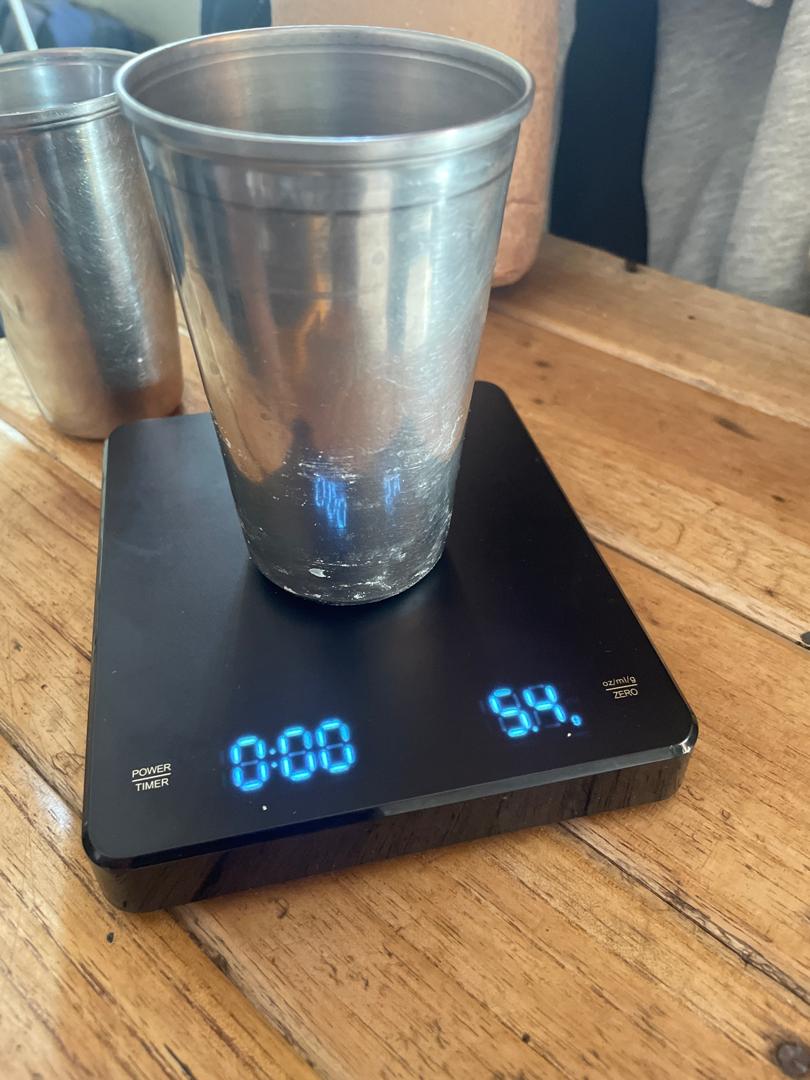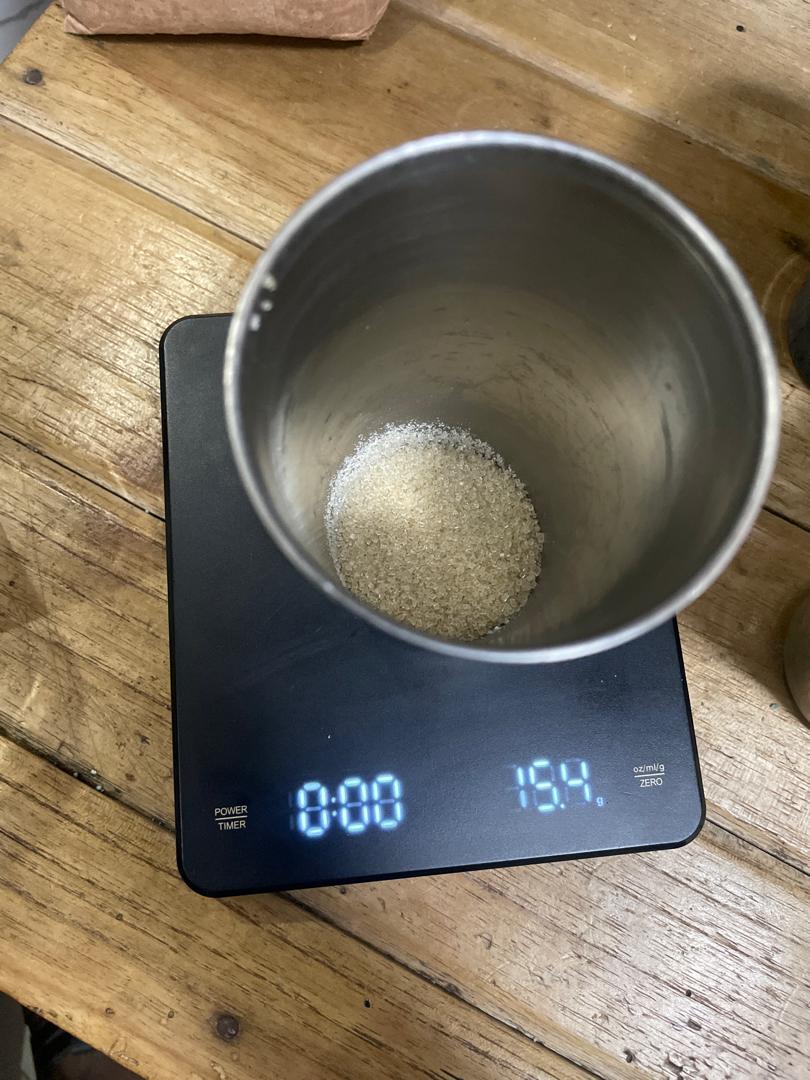NKP & Brown Sugar
We couldn't find KNO3 in any form, so I decided to use a blend/mix of NPK fertilizer and sugar.
I started mix and cook (heat to melt the sugar) them together to make a fuel paste as follows.
- 10 g of grinded NPK

- 5.4 g of grinded table sugar

- Mixed they made 15.8g

- I heated them, but the heat from the gas stove was to high. It boiled quickly, and dried very quickly
into a kind of charcoal.


I gave it the benefit of the doubt and lighted a match on it, but it obviously wouldn't burn.

- in the tutorial I followed they had 65%KNO3 by mass but in NKP 17-17-17 K and N combined make only 34% by mass,
so i figure I need almost twice NPK mass to his KNO3 so I added an extra 10g of NKP in my mix,
and 10g of NPK, is 3.4g of K and N combined. So I had roughly 25g of NKP and brown sugar mix.

- Then I gave it another go, this time with a wide pot and higher from the gas stove to transfer the heat a slower.
It did improve visually, but the mix was still too dry (not a paste), and wouldn't burn.
- It looked like the sugar wasn’t enough. Next tripple the amount of sugar (15ish grams).
So this time I had almost 35g of the mix.

- Another go, and the result had improved again. This time I made the blend, but it looks like it stayed on the
stove for long than necessary. It was it passed from brown to blackish, and didn't light on fire as just like
the others.
KNO3
Finally we found somewhere to buy KNO3 locally, after attempting to import it (in the form of Stump Remover) personally from the US and failed. So KNO3 was purchased on the 29th May, and I made a 65% KNO3 and 35% White Sugar mixture.
I am using KNO3: Potassium Nitrate (65% by weight) and Powder Sugar (35% by weight) to blend the rocket motor fuel. The burn was much more encouring. It was the exactly as I expected even before I amde rocket candy, but just a crystal state mixture.
The next moring I read more about KNO3 and Sucrose reactions trying to understand why everybody and everything I have read recommends 65%-35% ratio. I couldn't find it and then turned to a good old friend "Balanced chemical reactions" to the math hoping to get proof.

I found no proof. Instead, what I figured is the stoechiometric ratio is 73.925% of KNO3 and 26.075% of white sugar. I was surprized and puzzled more with the 65-35 ratio, but it reminds of the civil use Uranium and weapons grade Uranium.
I ran the test and found out that the 74% KNO3 -- 26% sugar mixture burns a bit more violently. It is the oxidizer rich vs 65-35 which is comperable to fuel rich in liquid rocket engines.
Rocket candy
Next I am making the comparison test of the two mixtures, but this time as candy (coocked). (I am also using toilet paper cores to make the motor case.)
I mixed two 100g of KNO3 and White Sugar. One in 0.65/0.35 another in 0.74/0.26 ratios.
I coocked them gently and made rocket candy of each configuration to measure the power to weight ration of each.
Then I packaged them in 9.7Cm long and 2.5cm diameter little tube. Net weight 57.7g for 74% KNO3 pack and 52.3g for the 65% KNO3 pack.


Latter we made bigger grains that we first test fired, and then packed in a 3D printed cylinder to make an engine, using the 65-35 raio. The ratio choice was because the simulation tool we were going to use "OPEN MOTOR" has preconfigured chemical mixture with that ratio.




Open Motor is an open source internal ballistics simulation software for rocket motor experimenters. And you can actually specify a new chemical's behaviour in the software to create new mixture. On that note we did a few modifications on KNSU preconfiguration of propellant mixture with one of my chemist friends (They can be different for you), but the default are good enough to work with from the get go.
This is the configuration we used from custom calculations and a bit of research and AI (Chat GPT) about KNO3-Sugar sugar mixtures and behaviours. The other reason to do this was because we didn't yet understand the difference between KNSU and KNSB, so we figured it could help to research on what we have and build around it.


The most important aspect of OpenMotor to me actually was the nozzle desigh part. That's what I was looking for when I found open motor, it was what open motor was built for primarily.

Project Development
- KNO3: Potassium Nitrate & Sugar
- PVC Pipe
- Processor: ESP32 DEVKIT-V1
- Data logger to SD Card
- Gyro & Accelerometer
- RF transmission
- Parachute Deployment
- Body Tube
- Nose Cone: Electronics Housing
- Motor Gimbal: Thrust Vectoring
- Shock Cord
Contact
Happy to receive your inquiries.
Location:
Kigali, Rwanda
Email:
philemonmail77@gmail.com.com
Call:
+250 780 716 155
